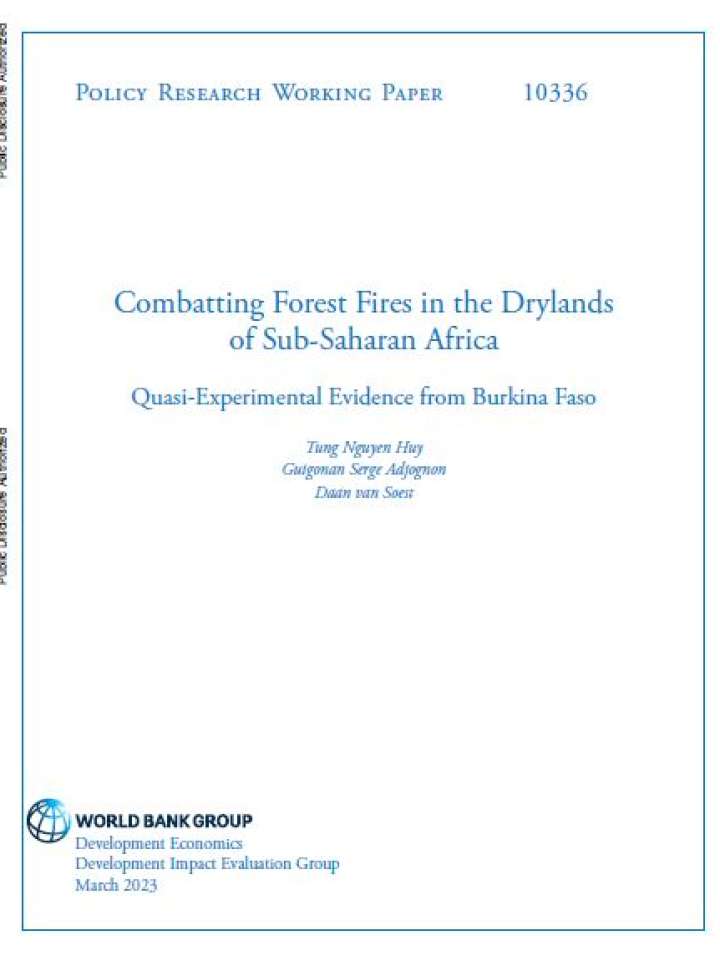Combatting forest fires in the drylands of Sub-Saharan Africa: Quasi-experimental evidence from Burkina Faso
This paper uses remote sensing data on forest fires and remaining tree cover to estimate the effectiveness of a project targeted at reducing fire incidences in twelve protected forests in arid Burkina Faso. The project consisted of two components that were implemented in the villages surrounding the target forests: a campaign aimed at raising community awareness about the detrimental effects of forest fires, and a program to support establishing and maintaining forest fire prevention infrastructures.
Using the Synthetic Control Method the paper finds that the project resulted in a 35% reduction in forest fire occurrences in the period of the year when they tend to be most prevalent —in November, at the very end of the agricultural season. However, this impact is short-lived (as the reduction only occurred in the first four years of the program). The reduction in forest fires also did not result in a detectable increase in vegetation cover—because the reduction in November was not sufficiently large to be captured via remote sensing, or because the duration of the reduction was too short for the vegetation to recover. The paper then tries to uncover the underlying mechanisms to shed light on which of the project’s components were effective and to also learn how the program can be improved.
Explore further
